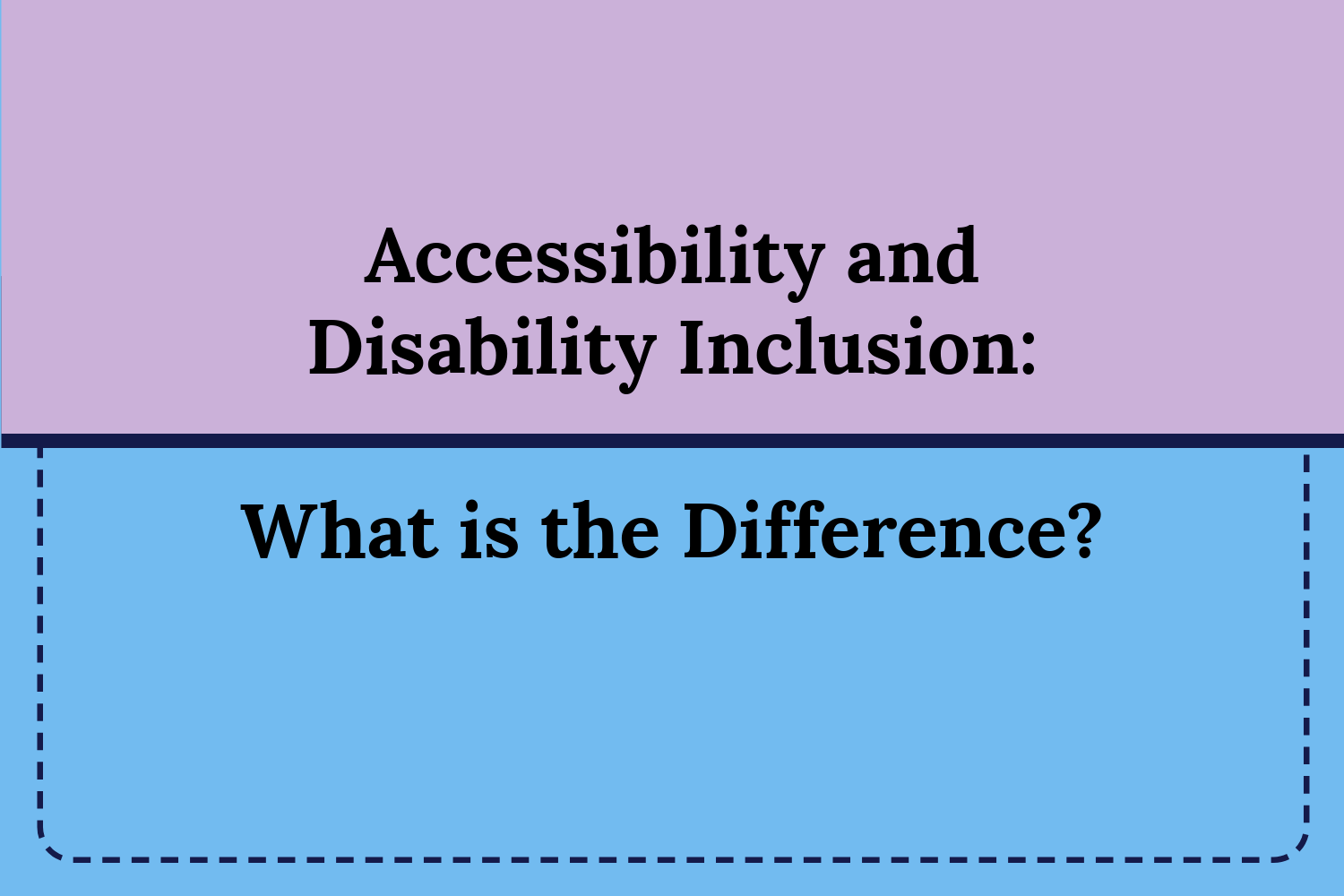When doing work within and for the disability community, there are so many words that are being used to signal commitment to people with disabilities. The two most common words are accessibility and disability inclusion.
Many view them as the same since it is needed to have a barrier-free society. Both accessibility and disability inclusion are interconnected, both necessary for the vision that the disability community is working towards. However, it is not always the same in terms of intention and action.
So, what is the difference between accessibility and disability inclusion?
The Process
Accessibility is the process of design and action to reduce barriers. In order to make an environment and/or activity accessible, there needs to be analysis of what barriers do exist and how to fix them to ensure that everyone can access them. This can go through so many areas such as buildings, communication, and interactions and require action to make it happen.
Disability inclusion is making disabled people feel included in the process/activity. Accessibility is needed for disability inclusion but the concept can extend to the value of the person’s experience and contributions. It is an extension of accessibility to fully have people with disabilities in all spaces in society.
What is Needed?
Accessibility requires having the tools, resources, and knowledge to be accessible and remove barriers. From knowing what is needed to be accessible to understanding the current limitation that prevents an environment and activity from being accessible, a level of technical knowledge and lived experience is needed to reach the accessibility required for success.
Disability inclusion is having the mindset of wanting to be inclusive to people with disabilities through participation and knowledge sharing. It still requires the action of accessibility but provides the feeling of being valued and respected at the same level as everyone else.
The Interconnection
Accessibility is needed in order to have disability inclusion. Without equitable access, it would be difficult to feel included. Accessibility is the step needed before reaching the true connection of disability inclusion. While it does take time in learning, obtaining resources, and knowledge sharing, it can provide the step necessary to move away from having to distinguish disability as an outlier, and into the full understanding that disability is part of living life.

